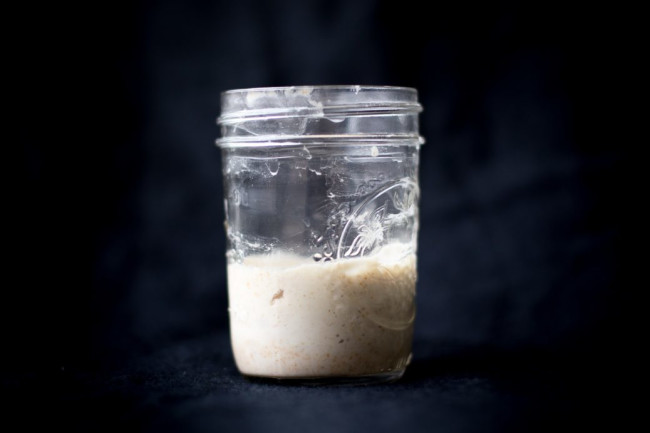ChatGPT can be used as a chemistry assistant to accelerate chemists’ ability to analyze published research and predict chemical reaction outcomes.
By Claudia Suzanne Willis
Researchers at the University of California, Berkeley successfully turned ChatGPT into a transformative chemistry assistant. The study, published in the Journal of the American Chemical Society, displays how ChatGPT is an accessible tool that can provide insight on literature searches and experimental outcomes.
The most exciting aspect of using ChatGPT as a chemistry assistant is that scientists don’t also need to be coding geniuses to use it. This breakthrough bridges the gap between chemists and computer scientists, making literature analysis and experiment prediction faster and easier than ever.
The Revolutionary Nature of ChatGPT
ChatGPT is a large language model, a type of artificial intelligence that is able to process huge amounts of text data in a relatively short amount of time. It is able to use large data sets to understand, summarize, analyze, and even predict content. This type of program could be particularly useful to scientists who spend hours combing published literature for specific research information.
RELATED: Check out other computer-powered Citizen Science projects
The really revolutionary aspect of ChatGPT is that you can ask it any question in plain language, and it responds in an understandable way. Imagine it as your virtual conversation buddy that can discuss complex subjects, providing increasingly detailed information as you chat along.
Traditionally, natural language processing models required significant coding expertise and effort to process text data. They needed specific language instructions and constant updates to adapt to changing tasks. Imagine having to reprogram your calculator every time you want to solve a new type of math problem. Natural language models typically focus on one type of task and need constant reprogramming when the objective shifts.
With ChatGPT, researchers simply type instructions, directing the chatbot to gather, summarize, and organize data. Another significant advantage of ChatGPT is its ability to translate information into multiple languages, while traditional models struggle with languages other than their training data.
A Chemistry Assistant in the Making
The key to ChatGPT becoming a successful chemistry assistant is an instruction method called prompt engineering. Prompt engineering is the process of structuring text to assign a clear task to ChatGPT, and it works because the chatbot is able to learn from the prompt it is given. Essentially, the goal in creating successful prompt engineering instructions is to write them out the way you would a detailed recipe. The more specific and direct the language in the recipe is, the more likely you are to get a successful outcome.
Researchers first used prompt engineering to teach the chatbot how to read a literature article and highlight relevant chemical reaction information. This was done by showing the chatbot examples of experimental sections of papers, and guiding it to select relevant text. ChatGPT became highly successful in identifying chemical compounds and reaction conditions, such as temperature and reaction time of experiments.
The second capability researchers were able to teach ChatGPT was to predict experiment outcomes. Once the chatbot had accumulated a large amount of data about specific reaction conditions, it could use its pool of knowledge to answer questions about experiments, and list step-by-step instructions for how to complete a reaction. Researchers found that the ChatGPT chemistry assistant had excellent precision, recall, and accuracy when extracting and analyzing literature data.
RELATED: Brain-like Computers from Optical Fibers
Limitations of the Chatbot Chemistry Assistant
Although the web-based ChatGPT is readily available to anyone who signs up, a major limitation of using the general chatbot is its inability to access the most recently published data from September 2021 and on. While for most users this is not an issue, for anyone trying to gather specific information after this date they will be unable to do so using the general ChatGPT tool.
Another limitation of ChatGPT is its tendency to report hallucinations as factual information. Hallucinations occur when the chatbot fabricates data that does not exist. Hallucinations can be significantly reduced by avoiding open-ended prompts and requesting specific information.
When using the chatbot as a chemistry assistant, the researchers propose three fundamental principles to prompting ChatGPT: 1) Minimizing Hallucination; 2) Implementing Detailed Instructions; 3) Requesting Structured Output. By following these steps, users can most effectively use ChatGPT as a literature search tool.
The Future of ChatGPT in Science
The University of California, Berkeley researchers have created a successful proof-of-concept ChatGPT Chemistry Assistant. Their principles and data mining examples can guide chemists from all backgrounds to tap into the potential of ChatGPT. Its accessibility, without the need for prior coding experience, makes it a versatile tool for chemists at every skill level.
Chemists are not the only scientists excited about using AI tools. The U.S. Department of Energy is funding 15 projects aimed at using AI to accelerate scientific discovery in nuclear physics research, opening up new possibilities for AI-assisted research across various fields.
The ChatGPT Chemistry Assistant has promised to be an excellent data mining and analysis tool for scientists, but there are many ways of interacting with ChatGPT. Other great examples of using ChatGPT include creating a travel itinerary, translating a document, and even writing song lyrics. AI chatbots like ChatGPT aren’t going anywhere, so why not give it a try the next time you need help brainstorming ideas?
This study was published in the peer-reviewed journal Journal of the American Chemical Society.
References
Marr, B. (2023, March 1). The best examples of what you can do with ChatGPT. Forbes. https://www.forbes.com/sites/bernardmarr/2023/03/01/the-best-examples-of-what-you-can-do-with-chatgpt/?sh=241c0cc6df11
U.S. Department of Energy. (2023, August 17). Department of Energy announces $16 million for research on artificial intelligence and machine learning (AI/ML) for nuclear physics accelerators and detectors. https://www.energy.gov/science/articles/department-energy-announces-16-million-research-artificial-intelligence-and
Zheng, Z., Zhang, O., Borgs, C., Chayes, J. T., & Yaghi, O. M. (2023). ChatGPT Chemistry Assistant for text mining and the prediction of MOF synthesis. Journal of the American Chemical Society 145(32), 18048–18062. https://doi.org/10.1021/jacs.3c05819

About the Author
Claudia Suzanne Willis is a Junior Research Specialist at a research center for smell and taste science. She is a chemist by training, and an avid reader, baker, and runner in her free time. She lives in Philadelphia, PA, with her roommate, cat, and houseplants. Follow Claudia on LinkedIn.




